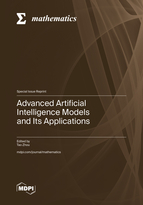Advanced Artificial Intelligence Models and Its Applications
A special issue of Mathematics (ISSN 2227-7390). This special issue belongs to the section "Mathematics and Computer Science".
Deadline for manuscript submissions: closed (31 August 2023) | Viewed by 31311
Special Issue Editor
Interests: computer vision; machine learning; medical image analysis; AI in healthcare
Special Issues, Collections and Topics in MDPI journals
Special Issue Information
Dear Colleagues,
The field of Artificial Intelligence (AI) has experienced tremendous growth since the mid-20th century, as evidenced by its application in a wide range of engineering and science problems. Over the last decade, AI has seen a breakthrough owing to the introduction of deep learning, which has allowed the use of various AI models in a diverse range of domains.
This Special Issue intends to provide a forum for researchers developing and reviewing new AI models for various fields, including science, engineering, industry, education, health, and transportation. We are inviting authors to submit relevant original results, literature reviews, theoretical studies, or papers addressing AI’s real-world applications.
Prof. Dr. Tao Zhou
Guest Editor
Manuscript Submission Information
Manuscripts should be submitted online at www.mdpi.com by registering and logging in to this website. Once you are registered, click here to go to the submission form. Manuscripts can be submitted until the deadline. All submissions that pass pre-check are peer-reviewed. Accepted papers will be published continuously in the journal (as soon as accepted) and will be listed together on the special issue website. Research articles, review articles as well as short communications are invited. For planned papers, a title and short abstract (about 100 words) can be sent to the Editorial Office for announcement on this website.
Submitted manuscripts should not have been published previously, nor be under consideration for publication elsewhere (except conference proceedings papers). All manuscripts are thoroughly refereed through a single-blind peer-review process. A guide for authors and other relevant information for submission of manuscripts is available on the Instructions for Authors page. Mathematics is an international peer-reviewed open access semimonthly journal published by MDPI.
Please visit the Instructions for Authors page before submitting a manuscript. The Article Processing Charge (APC) for publication in this open access journal is 2600 CHF (Swiss Francs). Submitted papers should be well formatted and use good English. Authors may use MDPI's English editing service prior to publication or during author revisions.
Keywords
- machine learning
- deep learning
- pattern recognition
- computer vision
- multimedia retrieval and analysis
- multimodal representation learning
- statistical learning
- medical image analysis
- security applications
- big data and analysis
- benchmark dataset






